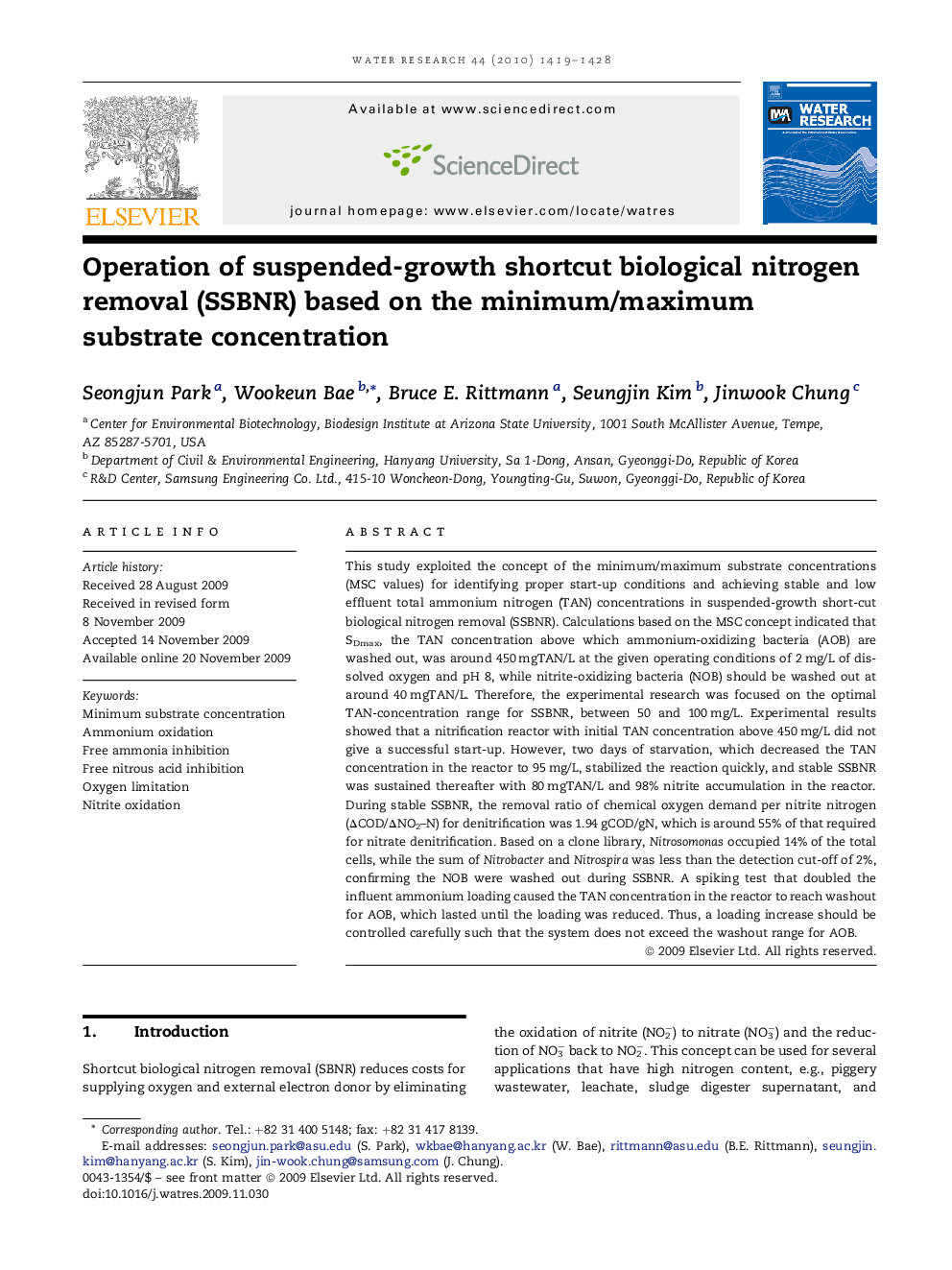| کد مقاله | کد نشریه | سال انتشار | مقاله انگلیسی | نسخه تمام متن |
|---|---|---|---|---|
| 4484279 | 1316915 | 2010 | 10 صفحه PDF | دانلود رایگان |

This study exploited the concept of the minimum/maximum substrate concentrations (MSC values) for identifying proper start-up conditions and achieving stable and low effluent total ammonium nitrogen (TAN) concentrations in suspended-growth short-cut biological nitrogen removal (SSBNR). Calculations based on the MSC concept indicated that SDmax, the TAN concentration above which ammonium-oxidizing bacteria (AOB) are washed out, was around 450 mgTAN/L at the given operating conditions of 2 mg/L of dissolved oxygen and pH 8, while nitrite-oxidizing bacteria (NOB) should be washed out at around 40 mgTAN/L. Therefore, the experimental research was focused on the optimal TAN-concentration range for SSBNR, between 50 and 100 mg/L. Experimental results showed that a nitrification reactor with initial TAN concentration above 450 mg/L did not give a successful start-up. However, two days of starvation, which decreased the TAN concentration in the reactor to 95 mg/L, stabilized the reaction quickly, and stable SSBNR was sustained thereafter with 80 mgTAN/L and 98% nitrite accumulation in the reactor. During stable SSBNR, the removal ratio of chemical oxygen demand per nitrite nitrogen (ΔCOD/ΔNO2–N) for denitrification was 1.94 gCOD/gN, which is around 55% of that required for nitrate denitrification. Based on a clone library, Nitrosomonas occupied 14% of the total cells, while the sum of Nitrobacter and Nitrospira was less than the detection cut-off of 2%, confirming the NOB were washed out during SSBNR. A spiking test that doubled the influent ammonium loading caused the TAN concentration in the reactor to reach washout for AOB, which lasted until the loading was reduced. Thus, a loading increase should be controlled carefully such that the system does not exceed the washout range for AOB.
Journal: Water Research - Volume 44, Issue 5, March 2010, Pages 1419–1428